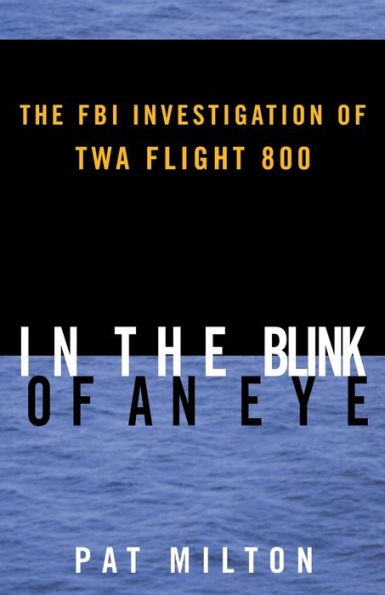

Paperback
-
PICK UP IN STORECheck Availability at Nearby Stores
Available within 2 business hours
Related collections and offers
Overview

Product Details
| ISBN-13: | 9780812991741 |
|---|---|
| Publisher: | Random House Publishing Group |
| Publication date: | 08/18/1999 |
| Pages: | 384 |
| Product dimensions: | 5.50(w) x 8.50(h) x 1.00(d) |
About the Author
Read an Excerpt
CHAPTER 1
The Beepers
At 8:45 p.m. on July 17, 1996, the last toasts of a very private dinner were raised within a mahogany-paneled private dining room of the Friars Club on East Fifty-fifth Street in Manhattan. The guest of honor was a short, compactly built former Marine named Ray Kelly: ex-police commissioner of New York City, newly named undersecretary of the U.S. Treasury in charge of U.S. Customs, the Secret Service, ATF, and other law enforcement branches. The dinner was an intimate one, as befitted a vestpocket-size club that occupied a single brownstone. About thirty guests sat on either side of Kelly at a horseshoe-shaped banquet table. Most were men: top brass in the New York police department, the FBI, the CIA, and the Secret Service. But among them were a few women judges and prosecutors. The men kept their jackets on and their ties pulled tight, the women remained in their business suits, but a sense of fun, even mischief, pervaded the room. The Friars Club was one place where a public official could have a glass of port with dessert, light up a cigar, and tell an off-color story without having to read about it the next morning in the Daily News.
As the guests were leaving—law enforcement dinners tended to start and end early, even at the Friars—the gently insistent sound of beepers began chirping from every direction. The guests exited, perhaps a bit more quickly than usual, to their waiting cars to return the calls, not yet aware that they were all about to get the same message.
One of the biggest men in the group—six feet tall, solidly built—managed to look rumpled in his newly pressed suit as he trotted toward his car. With the easy warmth by which his colleagues had come to know him, James Keith Kallstrom mumbled a few quick good-byes, slid behind the wheel of his navy blue Crown Victoria, and called the familiar number that had lit up his beeper: the FBI duty agent in downtown Manhattan. As he dialed, he unbuttoned his collar and yanked his tie loose. Turning north on Madison Avenue, he glanced at his watch. The time was 8:55 p.m.
Seconds later, Kallstrom, the FBI's assistant director in charge—the highest-ranking agent in the field—was racing toward the southbound FDR Drive, his siren blaring, his red dashboard light whirling, his headlights flashing. "The FAA's telling us there was no unusual communication from the crew, nothing. No distress calls." Traffic was thin at this hour, and Kallstrom was able to weave in and around the scattered taxis and Charge-and-Ride limousines. In the FBI's New York office, his fast driving habits were notorious. Everyone conceded he was good at the wheel; everyone knew he'd scored high in the FBI's tactical driving courses, and that he was a race-car and motorcycle enthusiast. But the New York agents also did anything they could to avoid riding with him. The work was dangerous enough as it was.
No distress calls? Kallstrom turned the air-conditioning up. With the back of his hand, he brushed the sweat from his brow and ran his fingers through his thick black hair. Commercial jets don't just fall out of the sky by accident. Kallstrom thought there was a good chance it was a bomb. Ever since the World Trade Center bombing three years before, he'd dreaded the next attack. You could beef up security, wiretap even more suspected terrorists, but Kallstrom knew the real lesson of the World Trade Center: You couldn't cover every possibility. You never knew what was going to happen next. One thing was sure: If a 747 and its passengers had just been downed by sabotage, the world had changed. No plane had ever been downed by terrorists in the United States before.
Hurtling down the FDR Drive, Kallstrom punched an unlisted Virginia home number into the secure phone set on the floor beside his seat. "Louie, we have a 747 down in the water just off the south shore of Long Island," he said tersely in his lingering Boston accent.
"Any survivors, Jimmy?" Louis Freeh, the FBI's director, was more than a colleague on a first-name basis with his New York bureau chief. Years ago, Freeh had worked for Kallstrom as a field agent. When he'd left the FBI to become a federal prosecutor, he and Kallstrom continued to work together to convict Mafia bosses.
"I've got agents headed over to the Coast Guard station in East Moriches. They're sending boats out from there. So far we just don't know."
"Anything you need, you got it, you know that, right?"
"Right."
Within minutes, the news had been passed up the line: from Freeh to Attorney General Janet Reno, from Reno to White House chief of staff Leon Panetta, from Panetta to President Clinton. Kallstrom's next call was to his number-two man, Tom Pickard, whom he instructed to call John O'Neill, head of the FBI's counterterrorism unit in Washington. O'Neill then called the president's special assistant on terrorism, Richard Clarke. And that was how it worked: From Kallstrom's car phone, the White House was now alerted and on the case.
